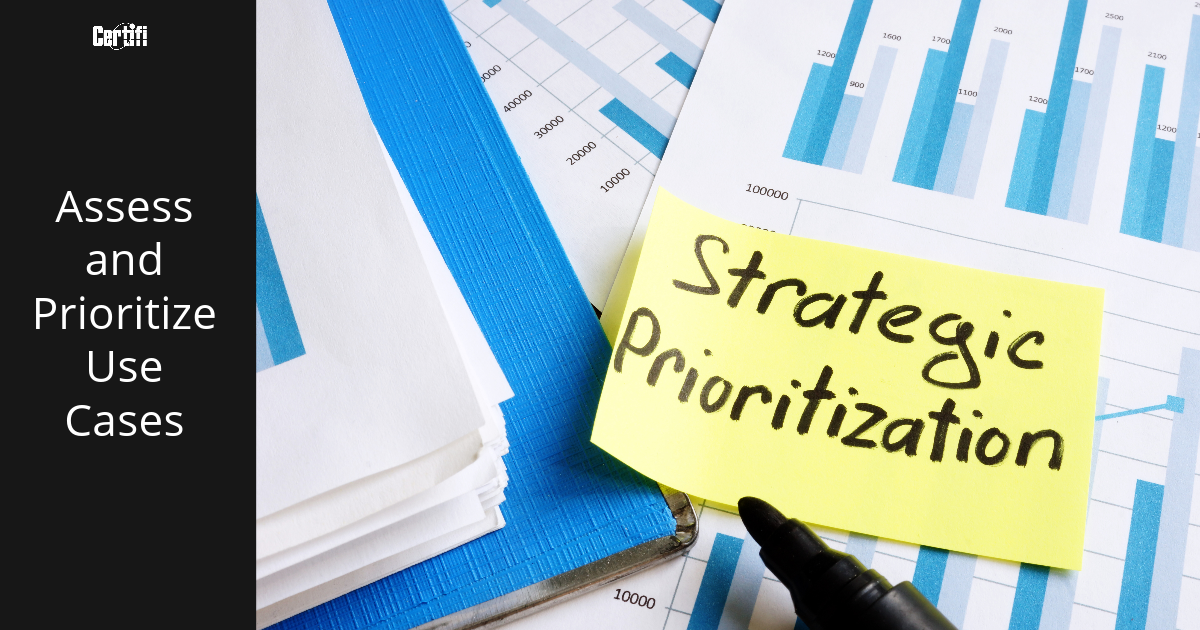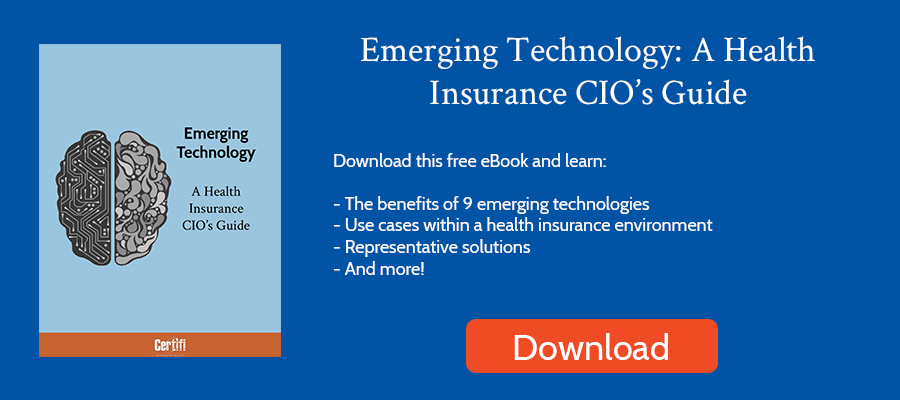In a world where the potential of artificial intelligence (AI) looms large, it’s easy to envision a future where its capabilities may seem limitless, even posing existential threats – like the destruction of the human race. Amidst these concerns, there are actionable steps that insurers can take today to harness the power of AI to improve their organizations.
Read on for artificial intelligence advice for insurers, including how to build the appropriate infrastructure and potential initial use cases:
Assign an AI Leader
First, assign an AI leader to your organization. A good AI leader should possess technical expertise, strategic thinking, and leadership skills.
The AI leader helps drive AI strategy and projects forward within an organization. The role may include strategic planning, governance and risk management, cross-functional alignment, talent management, technology evaluation/adoption, performance monitoring, and external engagement.
Overall, the AI leader plays a crucial role in shaping the organization’s AI strategy, fostering a culture of AI innovation, and driving the successful implementation and adoption of AI solutions to achieve business goals.
Define Employee Acceptable Use
Many organizations – including insurers – have determined that access to large language models (LLMs) like ChatGPT is more harmful than helpful and have banned its use. Good reasons to do so exist, including:
- Ethical Concerns: LLMs can generate content that can be misleading, harmful, or biased.
- Legal and Compliance Issues: LLMs can generate content that may infringe upon intellectual property rights, disclose sensitive information, or violate regulatory requirements.
- Quality Control: LLMs, while powerful, can generate inaccurate or irrelevant responses.
- Security Risks: Insurers may have concerns about the potential exposure of sensitive information.
Organizations that move forward with LLMs typically authorize specific uses.
Create an AI Ethics Policy
An ethics policy helps organizations navigate the ethical challenges of AI technology. Creating a policy ensures AI is developed and deployed in alignment with an organization’s values, protects stakeholders, and contributes positively.
Creating an ethics policy can be more valuable for insurers than other organizations. Why? Because AI can introduce bias that may adversely affect specific populations. For example, a health insurer may use AI to recommend outreach or identify those at risk of chronic illness. If insurers improperly train that AI or the data used is biased, it could lead to unintended results.
The US Department of Health and Human Services created a trustworthy AI Playbook that insurers can use as a framework for policy development.
Develop An Employee AI Education Program
The content and structure of an AI employee education program may vary based on your organization’s specific policies, use cases, and AI maturity level. Be sure to tailor education and training to employee needs. For example, your member services AI education will likely differ significantly from your software development team’s training.
That said, an AI employee education program should deliver a comprehensive understanding of AI technologies, their implications, and how to engage with them responsibly. That may include:
- Introduction to AI: Provide an overview of AI, its capabilities, and its potential impact.
- AI Ethics: Explore AI’s challenges, including bias, fairness, transparency, privacy, and accountability. Include information from your AI ethics policy.
- Responsible AI Development: Teach employees about data collection, data quality, data governance, and the importance of unbiased and representative datasets.
- Bias and Fairness: Highlight the potential for bias in AI systems and its impact on different user groups.
- Privacy and Data Protection: Educate employees about the importance of privacy in the context of AI. Discuss best practices for handling and protecting sensitive data, including informed consent, anonymization, and secure storage.
- Legal and Regulatory Landscape: Provide an overview of the legal and regulatory frameworks relevant to AI, including intellectual property, liability, and compliance requirements.
- Continuous Learning and Updates: Emphasize the dynamic nature of AI and the need for continuous learning to stay updated with the latest developments and best practices. Encourage employees to engage in ongoing professional development, and attend relevant workshops, conferences, and online courses to deepen their understanding of AI technologies and their ethical implications.
- Use Practical Examples: Use real-world case studies and examples to illustrate ethical dilemmas, challenges, and responsible practices in AI development and use.
Assess and Prioritize Use Cases
Once a leader, policy, and training are in place, consider assessing and prioritizing AI use cases. Here are six common AI use cases we’ve seen insurers investigate and implement:
Member Self-Service
Insurers can leverage AI-based chatbots and virtual assistants to deliver engaging member self-service solutions. Implementing AI-powered chatbots on their websites or mobile apps helps insurers offer personalized and real-time assistance to members. Chatbots can answer common queries, provide information about coverage, claims, or policy details, and guide members through self-service processes, such as updating personal information or submitting claims digitally. Chatbots and virtual assistants that understand natural language can improve the overall member experience.
Code Generation
If you employ experienced, productive employees you may not gain much from leveraging AI’s code-generation tools. But if you have young, inexperienced staff, you may be able to increase throughput by leveraging AI’s code development features.
Keep in mind that code generation may require submitting proprietary information to an AI code generation service. That is a significant risk, one that many organizations have decided outweighs the potential benefits of AI code-generation tools.
Draft Member and Provider Communications
I’m likely biased, but I think ChatGPT drafts average, not great content. That said, it can help brainstorm ideas and draft communications. For insurers, AI can help create member and provider communications. I wouldn’t rely on AI for a final draft, but it certainly can help craft drafts that humans then review and improve, saving time.
Refine Messages for Tone
Maybe you don’t trust AI to craft messages. But you might consider using it to adjust the tone or correct grammatical errors. You can use it to suggest improvements to existing content or one-on-one member communications, serving as an editor for your member services team. Sanding off the rough edges is a great use case for AI.
Translation
You likely need to translate content into multiple languages. AI makes it easy to translate text into another language. You’ll want a native speaker to review and refine that content, but AI can significantly speed up your language translations by creating a first draft.
Regulatory Interpretation
Many experts have predicted that AI may significantly impact the legal industry. But early returns show that AI may not be perfect, with reports of one law firm facing a $5,000 fine after they used ChatGPT to research court filings and it cited six fake cases.
AI may not be ready for primetime legal research just yet. But for the heavily regulated insurance industry, ChatGPT can summarize the key points of pending legislation or regulation. For quick regulatory interpretations, AI can be helpful.
Certifi’s health insurance premium billing and payment solutions help payers improve member satisfaction while reducing administrative costs.








